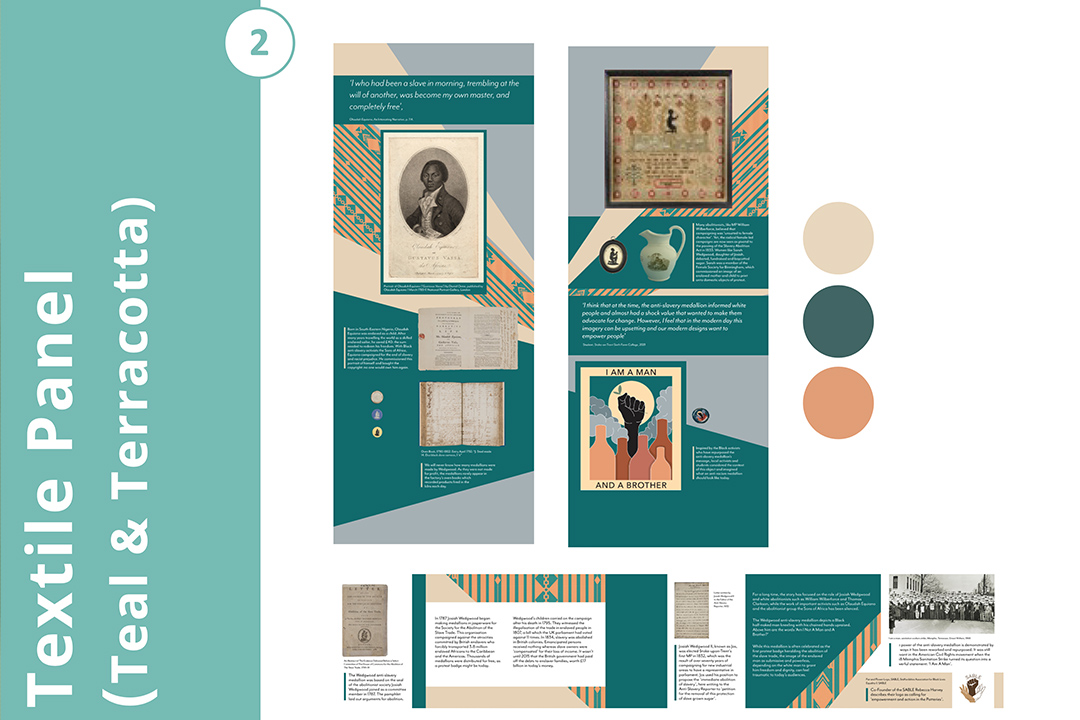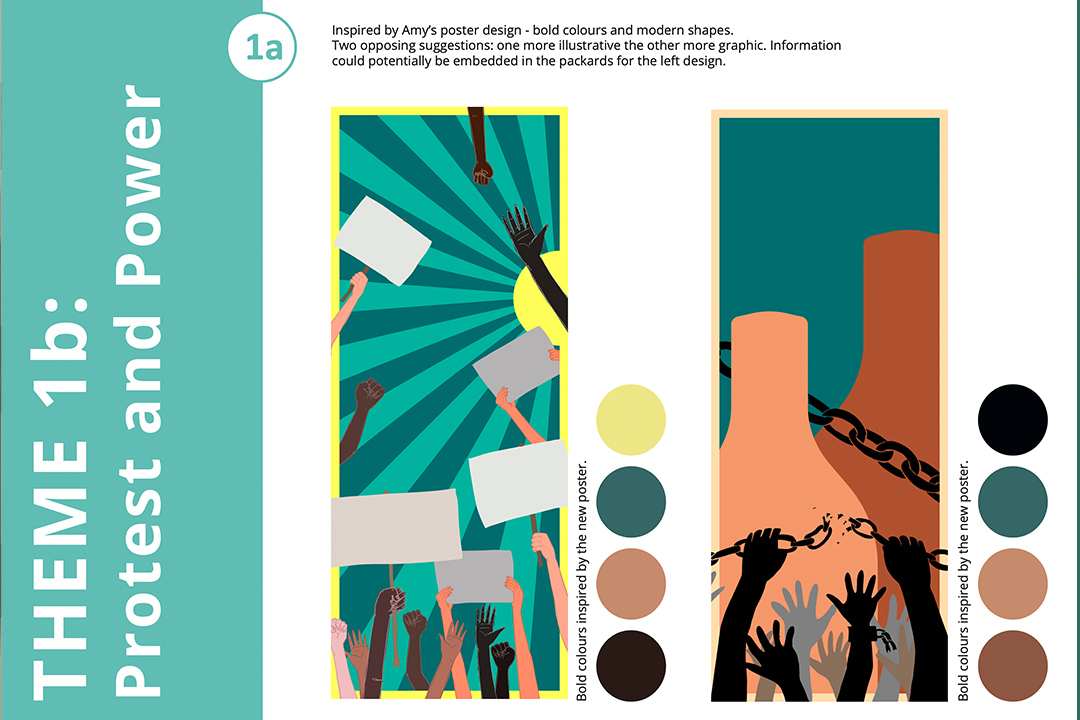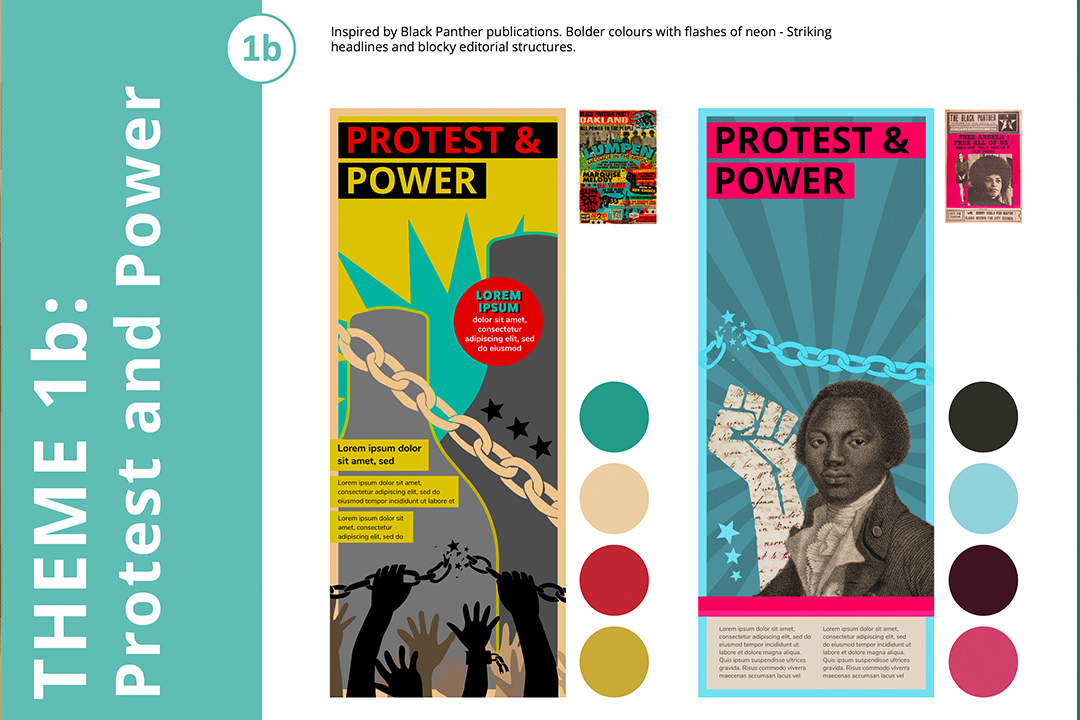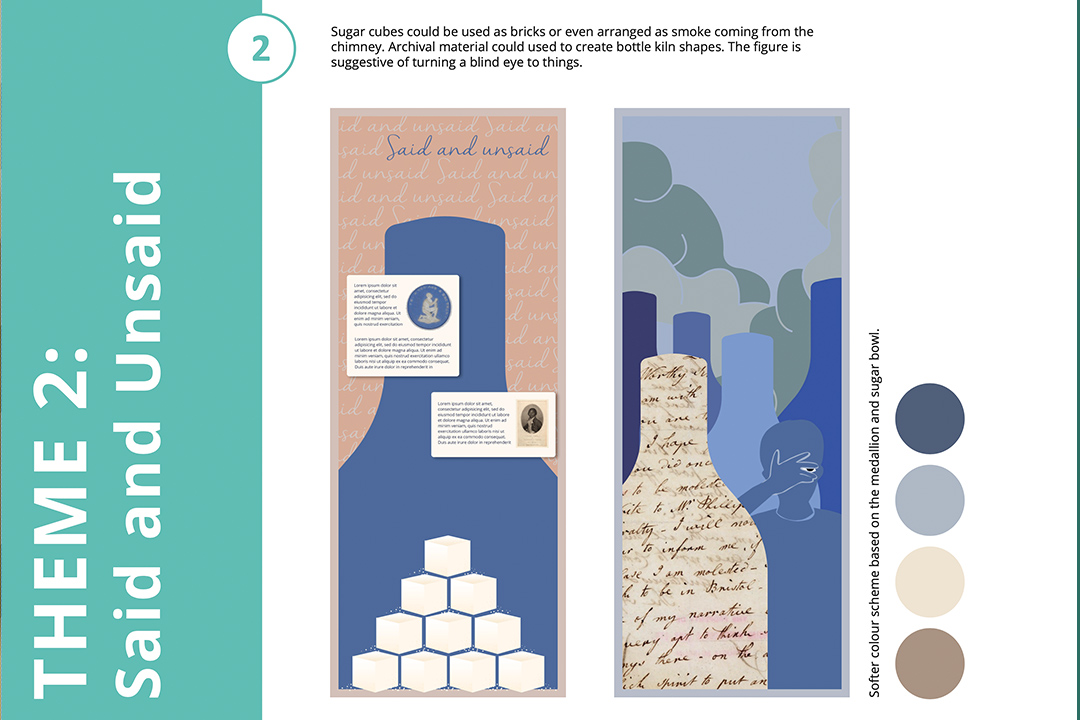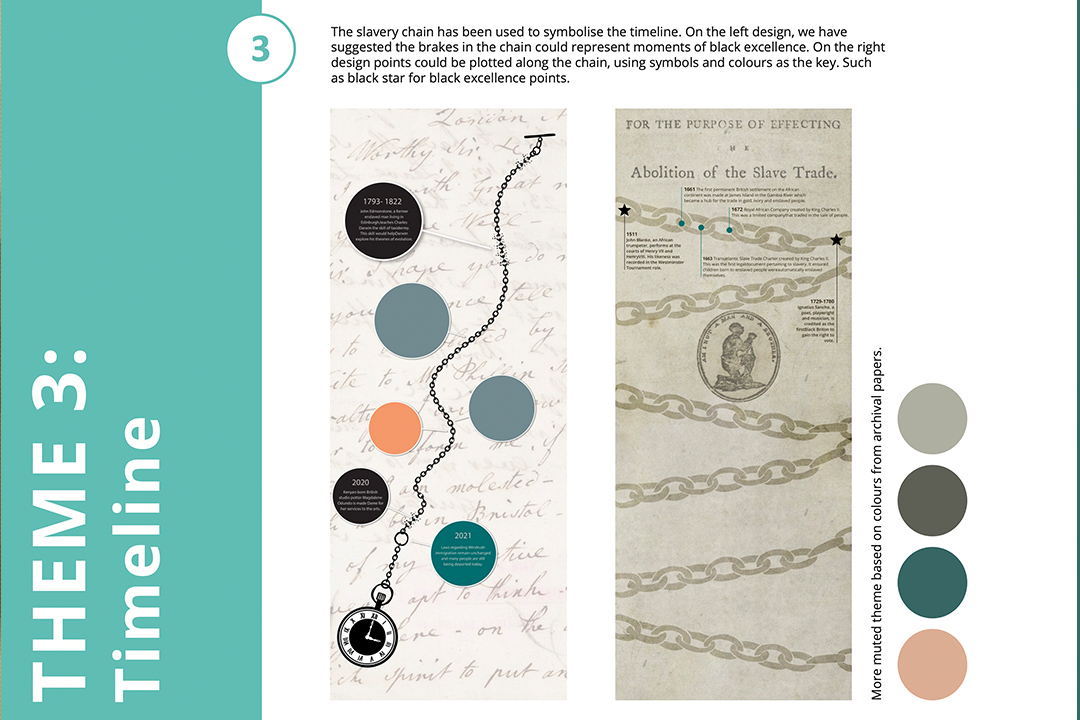Working with the team at V&A Wedgwood, we supported a discovery and consultation phase for the redisplay of Josiah Wedgwood’s anti-slavery medallion. This resulted in the final design of two vertical exhibition panels and a lectern graphic.
Following feedback and direction taken from a series of workshops held with students from Stoke-on-Trent Sixth Form College, we explored a variety of narrative avenues. The challenge being to tell the complex story of the iconic medallion. Although Josiah Wedgwood was a renowned abolitionist, it is important to recognise how his business played a part in the slave trade. This can be suggested through the production of goods linked to colonial products such as luxurious sugar bowls. In addition, Wedgwood also played a major role in the construction of the Trent & Mersey canal linking Liverpool to Stoke-on-Trent.
The manufacturing of the medallions began in 1787. They were given away, without cost, to those campaigning to end British links to the trans-Atlantic slave trade.
A fascinating article about the medallion written by Georgia Haseldine can be found on the History Worksop website. In addition Kate Turner’s blog article ‘I am a man and a brother: allyship by design‘ explains more about the foundation behind the collaborative project.
Final design installed at V&A Wedgwood
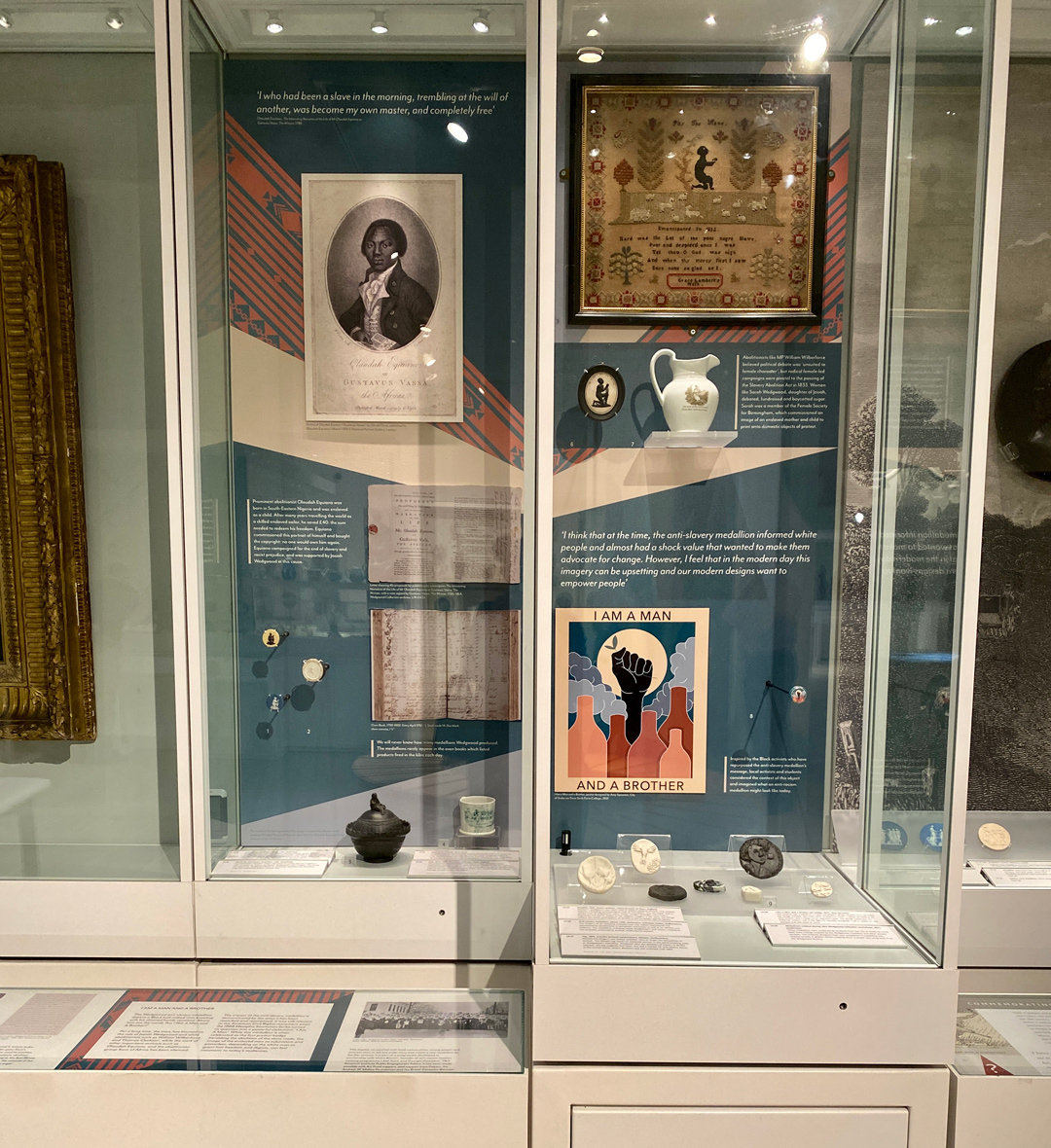
Design exploration phase for exhibition panels
Textile inspiration from the Akwete cloth made by the Igbo People of Nigeria
The final designs for the panels used visuals inspired by Akwete cloth made by the Igbo People of Nigeria. This was described by Olaudah Equiano’s account of his childhood. A portrait of Equiano, a prominent abolitionist figure, is seen in the left exhibition panel. Likewise, the final colour scheme drew inspiration from the I am a Man poster design by Amy Sproston, featured on the right exhibition panel.

Concluding exhibition panel design before final adjustments
